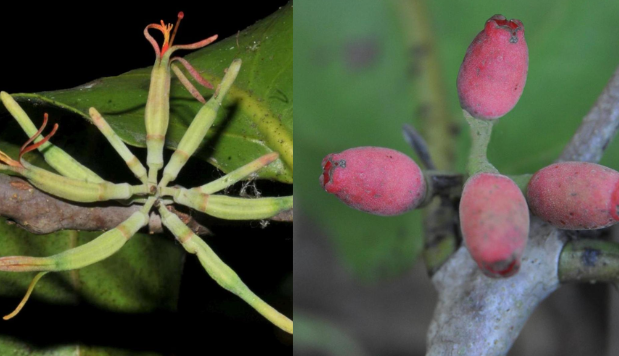Indian Scientists Discover Two New Plant Species
Indian botanists have recently identified two new plant species in distinct bio-geographic hotspots: the Andaman and Nicobar Islands and Arunachal Pradesh. These results show how diverse India’s plants are and how important it is to keep up protection efforts.
Discovery in the Andaman and Nicobar Islands
The new species, Dendrophthoe longensis, was found on the Long Islands in the middle Andamans by a group of scientists led by Lal Ji Singh. This plant is in the mistletoe family and has aerial stem parasites that make it stand out. Dendrophthoe longensis lives on mango trees (Mangifera indica) near the edges of evergreen woods. It has amazing hemiparasitic adaptations, but habitat loss and human activities put it at risk.
Discovery in Arunachal Pradesh
Another significant discovery was made by Krishna Chowlu’s team in the Mandla region of West Kameng district, Arunachal Pradesh. They identified a new herbaceous plant species named Petrocosmea arunachalense. It was hiding in a cave, which shows that it doesn’t need much sunlight. The Gesneriaceae family now has a new member. This species is fully white with purple spots and a hairy texture.
About Dendrophthoe longensis
Dendrophthoe longensis is a parasite plant species from Asia that is in the family Loranthaceae. Its haustorium is unique, which lets it attach to host trees and get nutrients from them. It depends on its host for food, unlike most plants that mainly make food through photosynthesis. This species lives mostly in tropical woods and can have a big effect on the health of host trees by taking their resources, which could cause their photosynthetic capacity to drop. Sunbirds and flowerpeckers, among other birds, can pollinate its flowers, which is very important for its reproduction. There are many things that Dendrophthoe longensis does for its environment, from changing how trees grow to affecting bird populations.
About Petrocosmea arunachalense
Petrocosmea arunachalense is a rare species of plant in the family Gesneriaceae. It was first named in 2012 and is native to Arunachal Pradesh. This perennial plant is known for growing in rosette shapes and does best in the damp, shady conditions found in subtropical forests. It has beautiful blue flowers, which are unique to this type of Petrocosmea and help make it stand out. The plant is mostly found in Talle Valley Wildlife Sanctuary, where it grows on rocky soils that provide important microhabitats that help the area’s species variety. Because it is hard to find and could have its habitat disturbed, conservation efforts are very important.
Month: Current Affairs - June, 2024
Category: Environment Current Affairs





